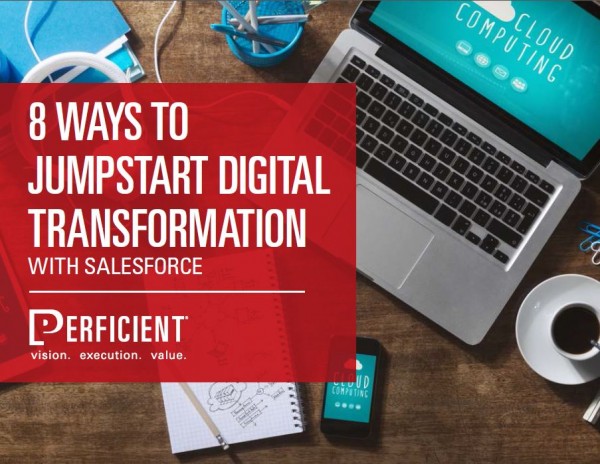As a Fullforce Service Cloud Master, Salesforce has recognized Perficient’s proven expertise in delivering digital experience, business optimization and industry-specific customer service solutions that empower enterprises to connect and engage with customers in a whole new way. With more than  300 Service Cloud implementations under our belt we’ve pretty much seen it all and developed some very unique Salesforce solutions to address our clients’ complex and unique business challenges! So, we’ve asked our Service Cloud experts to give us a rundown of some of the top digital transformation trends we’re seeing from Salesforce Service Cloud customers in 2016 and beyond.
300 Service Cloud implementations under our belt we’ve pretty much seen it all and developed some very unique Salesforce solutions to address our clients’ complex and unique business challenges! So, we’ve asked our Service Cloud experts to give us a rundown of some of the top digital transformation trends we’re seeing from Salesforce Service Cloud customers in 2016 and beyond.
But before we give you a sneak peek of some of those trends in our latest Salesforce guide, 8 Ways to Jumpstart Digital Transformation with Salesforce, it’s important for service organizations to assess the maturity of their support processes relative to these trends in order to define success for their business. Typically, we start the conversation by asking these four high-level discovery questions:

So how exactly do these questions relate to how organizations are digitally transforming customer service operations and systems in order to respond to new consumer trends in the marketplace?
These questions boil down to four key areas of focus to help you evolve your customer service engagement strategy.
Proactive Customer Care
Your customers not only expect you to manage a single persona or view of who they are as a customer, but to truly deliver top notch service you need to anticipate needs and have a proactive customer service strategy. You may be asking, “where exactly are there opportunities for proactive service and how do I implement a solution?” Using data analytics tools you can uncover some rather telling information about your customers’ service needs or common inquiries throughout the customer lifecycle that may serve as an opportunity to deliver proactive service. (Don’t forget service during the pre-purchase stage is equally as important.)
Omnichannel Capabilities
You often hear the term omnichannel in the context of sales referring to an approach that seeks to provide customers with a seamless shopping experience across channels (store, email, mobile, web, etc.) If your customers expect a seamless shopping experience why wouldn’t they not desire a seamless service experience too? Look for opportunities to leverage digital technologies to proactively communicate with your customers. Are you using web chat on product pages? Do you send out text reminders about upcoming appointments? Do you have a brief customer satisfaction survey email with a link helpful articles from your public knowledgebase? These are just a couple areas for you to explore
Self-Service Support
I’m not going to give too much away on this trend because I’ll be highlighting self-service in another post as it relates to another area of Salesforce’s suite of cloud solutions. Plus, Salesforce has also done a good job of highlighting this growing trend as part of this interactive infographic. The main premise of this trend from a customer service perspective is that today’s digitally savvy customers have the power at their fingertips to help themselves. Whether its their smartphone or tablet, these devices are resulting in an increased need for organizations to expand their service channels and update their support toolboxes. Having a public knowledge base is no longer a “nice to have” feature – it’s a must!
Hopefully you’ve been paying attention to this point and noticed I’ve only shared THREE customer service trends. The biggest one (and probably most important to running an efficient service operation) happens to be a part of our recent guide, 8 Ways to Jumpstart Digital Transformation with Salesforce. You’ll also get insider’s access to how the leading manufacturer of HD sports action cameras took customer service “to the extreme” with Service Cloud – so go download a copy!

